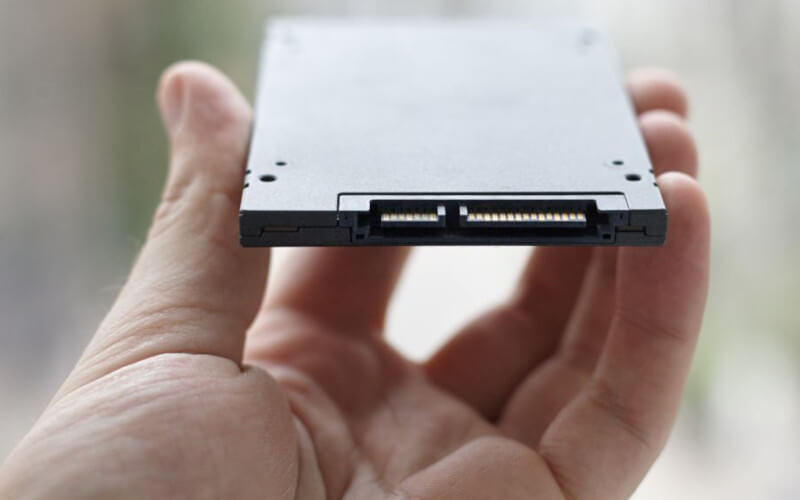An SSD, or solid-state drive, is a storage device that uses flash memory to store data. It is faster and more reliable than a traditional hard drive, which uses spinning disks to access and store data.
There are two main types of SSDs: internal and external.
What is Internal SSD?
Internal SSDs are installed inside a computer, typically in place of a hard drive. They store the operating system, applications, and other essential data.
The main advantage of an internal SSD is that it is directly connected to the motherboard, which means it can access data more quickly than an external drive.
What is External SSD?
External SSDs, on the other hand, are stand-alone devices that connect to a computer via a USB port or other interface. They are portable and can be used with any computer with the appropriate port or interface.
The main advantage of an external SSD is its portability, as it can be easily moved from one computer to another.
What are the Differences Between Internal and External SSDs?
Now, let’s take a closer look at the key differences between internal and external SSDs.
Size
Internal SSDs are typically smaller than external SSDs because they are designed to fit inside a computer case. This means that they have more limited space for storing data. External SSDs, however, are larger and can hold more data.
Speed
Internal SSDs are generally faster than external SSDs because they are directly connected to the motherboard. This allows them to access data more quickly. However, the speed of an external SSD can still be very good, especially if it is connected to a high-speed interface like USB 3.0 or Thunderbolt.
Cost
Internal SSDs are typically more expensive than external SSDs on a per-gigabyte basis. This is because they are more difficult to install and require special tools and knowledge. External SSDs are easier to install and can be plugged in and used immediately.
Compatibility
Internal SSDs are usually more compatible with a specific type of computer, as they are designed to fit into a specific type of drive bay. External SSDs are more versatile, as they can be used with any computer with the appropriate port or interface.
Upgradeability
Internal SSDs are usually easier to upgrade than external SSDs because they are directly connected to the motherboard. To upgrade an internal SSD, you need to remove the old drive and install a new one.
Upgrading an external SSD requires purchasing a new drive and transferring all of your data to the new one.
Data Transfer
Internal SSDs are faster at transferring data because they are directly connected to the motherboard. However, external SSDs can still transfer data at very high speeds, especially if connected to a high-speed interface like USB 3.0 or Thunderbolt.
Durability
Internal SSDs are generally more durable than external SSDs because they are protected inside a computer case. External SSDs, on the other hand, are more vulnerable to damage because they are portable and exposed to the elements.
Noise and Heat
Internal SSDs do not produce noise or heat because they have no moving parts. External SSDs may produce a small amount of noise and generate a small amount of heat, but this is usually not a concern.
Security
Internal SSDs are more secure than external SSDs because they are installed inside a computer.
Ease of use
Internal SSDs require technical knowledge and special installation tools, which can be intimidating for some users. External SSDs, on the other hand, are very easy to use – you need to plug them in, and they are ready to go.
Flexibility
Internal SSDs are less flexible than external SSDs because they are installed inside a specific computer and cannot be easily moved or used with other computers.
External SSDs, on the other hand, can be used with any computer with the appropriate port or interface, making them a good choice for users who need to access their data on multiple devices.
Capacity
Internal SSDs usually have a lower capacity than external SSDs because they are smaller and have less space for storing data. However, it is possible to find high-capacity internal SSDs if you need a lot of storage.
External SSDs, on the other hand, are available in many capacities and can be easily upgraded if you need more space.
Power
Internal SSDs do not require an external power source because the motherboard powers them. External SSDs, on the other hand, usually require a power source, either through an external power adapter or the USB port.
Warranty
Internal SSDs usually come with a more extended warranty than external SSDs because they are more complex and prone to failure. External SSDs, on the other hand, are generally more reliable and come with a shorter warranty.
Maintenance
Internal SSDs do not require any maintenance because they have no moving parts. External SSDs may require occasional maintenance, such as cleaning the connectors or updating the firmware.
Conclusion
There are many factors to consider when deciding between an internal and external SSD. Internal SSDs offer faster speed and higher durability but are more expensive and require technical knowledge to install.
External SSDs are more portable and easy to use but slower and less durable. Your ultimate decision should come down to what meets your individual needs and budget constraints.






